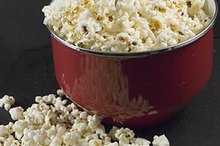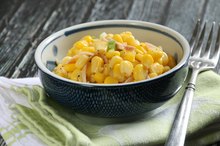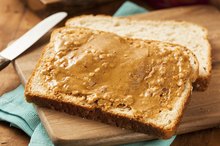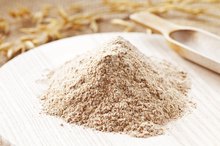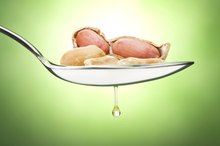What does fact checked mean?
At Healthfully, we strive to deliver objective content that is accurate and up-to-date. Our team periodically reviews articles in order to ensure content quality. The sources cited below consist of evidence from peer-reviewed journals, prominent medical organizations, academic associations, and government data.
The information contained on this site is for informational purposes only, and should not be used as a substitute for the advice of a professional health care provider. Please check with the appropriate physician regarding health questions and concerns. Although we strive to deliver accurate and up-to-date information, no guarantee to that effect is made.
What Starch Is in Popcorn?
With its fluffy texture, popcorn makes for a satisfying snack that's naturally fat- and sodium-free 4. Popcorn is produced from zea mays, a type of corn that has a thin enough outer hull to allow for the corn to pop when heated 3. Like other starchy vegetables, popcorn is a rich source of carbohydrates 2.
Starches 101
Starches are a white chemical that all plants naturally produce. A 1-cup serving of popcorn has 6.2 grams of carbohydrate, which becomes glucose in your body after it is digested.
Resistant Starch
Popcorn on a Low-Carb Diet
Learn More
Popcorn contains type one resistant starch, which is found in the cell walls of plants. It's present in seeds, beans and grains, including corn. As its name implies, resistant starch resists digestion, so it passes through to your gut primarily undigested, providing a source of nutrition for the healthy bacteria that lives in your digestive tract. In addition to providing fuel for your gut's bacteria, resistant starch may also help keep your insulin levels steady, reducing spikes in blood sugar.
- Popcorn contains type one resistant starch, which is found in the cell walls of plants.
- As its name implies, resistant starch resists digestion, so it passes through to your gut primarily undigested, providing a source of nutrition for the healthy bacteria that lives in your digestive tract.
A Whole Grain
While you might not realize it at first, popcorn is a natural whole grain, and eating it can help you reach your daily grain intake. Whole grains are defined by the Whole Grains Council as foods that contain all of the essential and naturally occurring nutrients of an entire seed in their natural proportions 56. They will contain the endosperm, the starchy portion of the seed, as well as the germ and the bran, sometimes called the hull. The U.S. Department of Agriculture recommends you eat 6 to 8 ounces of grains per day, half of which should be whole grains 5.
Other Nutrition Facts
Harkins Popcorn Nutrition
Learn More
Popcorn is a naturally healthy food, low in fat and high in dietary fiber, with 31 calories per 1-cup serving and less than half a gram of total fat. However, to keep popcorn a healthy food choice, limit the amount of added fat you include, as well as salt or seasonings, as this can increase the sodium content, which would otherwise be 1 milligram per serving, and the fat content.include:
- However
- to keep popcorn a healthy food choice
- limit the amount of added fat you include
- as well as salt or seasonings
- as this can increase the sodium content
- which would otherwise be 1 milligram per serving,
- the fat content
Air-popped popcorn is healthier than microwave popcorn, which is often oil popped and contains added seasoning 8. A 1-cup serving of microwave popcorn has 64 calories, 4.8 grams of total fat, 0.9 gram of fiber and 75 milligrams of sodium. Add no-salt dried herbs, such as garlic powder or powdered basil, to season your popcorn without raising calorie or salt content.
- Popcorn is a naturally healthy food, low in fat and high in dietary fiber, with 31 calories per 1-cup serving and less than half a gram of total fat.
Related Articles
References
- Encyclopedia Britannica: Starch
- MedlinePlus: Carbohydrates
- Popcorn.org: Popcorn -- From Seed to Snack
- Popcorn.org: What Makes Popcorn Pop?
- Whole Grains Council: Definition of Whole Grains
- ChooseMyPlate.gov: What Foods Are in the Grains Group?
- USDA National Nutrient Database: Popcorn, Air Popped
- USDA National Nutrient Database: Popcorn, Oil Popped, Microwave
- Mark's Daily Apple: The Definitive Guide to Resistant Starch
- Nguyen, V., Cooper, L., Lowndes, J. et al. Popcorn is more satiating than potato chips in normal-weight adults. Nutr J 11, 71 (2012). doi:10.1186/1475-2891-11-71
- Coco MG, Vinson JA. Analysis of popcorn (Zea mays L. var. everta) for antioxidant capacity and total phenolic content. Antioxidants (Basel). 2019;8(1). doi:10.3390/antiox8010022
- Zhou Y, Zheng J, Li Y, et al. Natural polyphenols for prevention and treatment of cancer. Nutrients. 2016;8(8) doi:10.3390/nu8080515
- Cleveland Clinic. Diverticular disease: greatest myths and facts. 2020.
- American Cancer Society. Teflon and perfluorooctanoic acid (PFOA). Updated January 5, 2016.
- Begley TH, White K, Honigfort P, Twaroski ML, Neches R, Walker RA. Perfluorochemicals: potential sources of and migration from food packaging. Food Addit Contam. 2005;22(10):1023-31. doi:10.1080/02652030500183474
- American College of Allergy, Asthma & Immunology. Corn allergy. Updated March 8, 2019.
- American Chemical Society (ACS). Popcorn: The snack with even higher antioxidants levels than fruits and vegetables. ACS Meeting; San Diego, California; March 25, 2012.
Writer Bio
Lana Billings-Smith has been writing professionally since 1997. She has been published in the "Montreal Gazette" and the "National Post." She also teaches and lectures at McGill University. A certified personal trainer, she holds a Bachelor of Arts with a specialization in leisure sciences and a minor in therapeutic recreation.
